- Reduced brittle failures: Increased elongation by more than 100%.
- Improved strength and stiffness: Increased flexural strength and flexural modulus by roughly 15%.
- Better performance at elevated temperatures: Increased heat deflection temperature by roughly 25%.
- Professional-looking parts: New grey color.
Formlabs is making their Tough resin even tougher – with a reformation – offering Tough 2000 as the more advanced 3D printing material.
Formlabs and EAC will continue to sell the Tough resin until it is sold out – then it will be replaced with Tough 2000. If you’ve been using Tough resin – it will be available through the end of 2020.
You can use the Tough 2000 resin on Formlabs desktop stereolithography (SLA) 3D printers – specifically on the Form 3+.
Tough 2000 vs Tough
Compared to Tough Resin, this material reformulation brings:
Tough 2000 Resin is the strongest and stiffest material in the functional family of Tough and Durable Resins, with “2000” representing the material’s tensile modulus. The resin is improved elongation, strength, and stiffness, which are typically competing mechanical properties.
Due to its high strength and modulus, Tough 2000 Resin can handle higher stress and will hold its shape better under load compared to Tough 1500 or Durable Resins. When pushed to its stress limit, Tough 2000 parts will bend significantly before ultimately breaking.
Note that Tough 2000 Resin requires specialty resin tanks, Form 2 LT Tank or Form 3 Tank v2.
Other Tough and Durable Resins
This video clip shows a stress test between the Tough 2000, Tough 1500, and Durable Formlabs resins.
Tough 1500 Resin is the most resilient material and is ideal for: prototypes that repeatedly bend and quickly return to shape; jigs and fixtures requiring repeated deflection; and simulating the strength and stiffness of polypropylene (PP).
Durable Resin is the most pliable, impact resistant, and lubricious material and is ideal for: squeezable prototypes and low friction assemblies; non-degrading surfaces as a result of repeated wear; jigs and fixtures that will experience significant impacts; and simulating the strength and stiffness of HD/LD polyethylene (PE).
When should I use Tough 2000 resin?
Tough 2000 Resin offers more advanced mechanical properties and a new dark grey look. It is ideal for:
- Strong and stiff prototypes
- Jigs and fixtures requiring minimal deflection
- Simulating the strength and stiffness of ABS
Choose Tough 2000 Resin for prototyping strong and sturdy parts that should not bend easily, such as housings and enclosures, jigs and fixtures, mechanical connectors, and prototypes undergoing wear and tear.
You can use this resin with applications across engineering, product design, and manufacturing. Tough 2000 resin can be printed for prototypes undergoing wear and tear, mechanical connectors, and housing and enclosures such as the below motor mount.
The improved strength, stiffness, and elongation allow engineers and product designers to iterate with higher confidence and reduce brittle failures.
Download the Tough 2000 resin data sheet to read on material properties and tech stats.
This video clip shows a motor threading with the Tough 2000 resin.
Where to find Tough 2000 Resin
You can find Tough 2000 resin in our Formlabs Resin Library where you can either order a sample part or order the actual resin.
Formlabs new 3D printer, the Form 3B, is an advanced stereolithography (SLA) desktop 3D printer optimized for biocompatible (thus, the ‘B’ in Form 3B) materials (resins) and validated workflows.
Form 3B vs Form 3: Which one should I use?
If you are an early adopter and you have already purchased a Form 3 before November 12th of 2019, then you can print all compatible resins on your Form 3 (or Form 2). If you purchase a Formlabs 3D printer AFTER November 12th of 2019, then you have two options.
Form 3B: Exclusively prints ONLY biocompatible resins (surgical guides, hearing devices, etc.)
Form 3: Prints only non-biocompatible resins (anatomical models, device prototypes, etc.)

Form 3B Price
The Form 3B is a little more expensive than the Form 3 – The Form 3 Basic Package starts at $3,499, whereas the Form 3B Basic Package starts at $4,999.
The Form 3B Basic Package includes the 3D printer, Finish Kit, Build, and Tank.
New Surgical Guide Resin
The newest surgical guide resin is an autoclavable, biocompatible resin for 3D printing surgical guides for implant placement. This next generation 3D printing material is for premium-quality surgical implant guides.
This resin is only available for the Form 2, Form 3B, and early 2019 Form 3 printers.
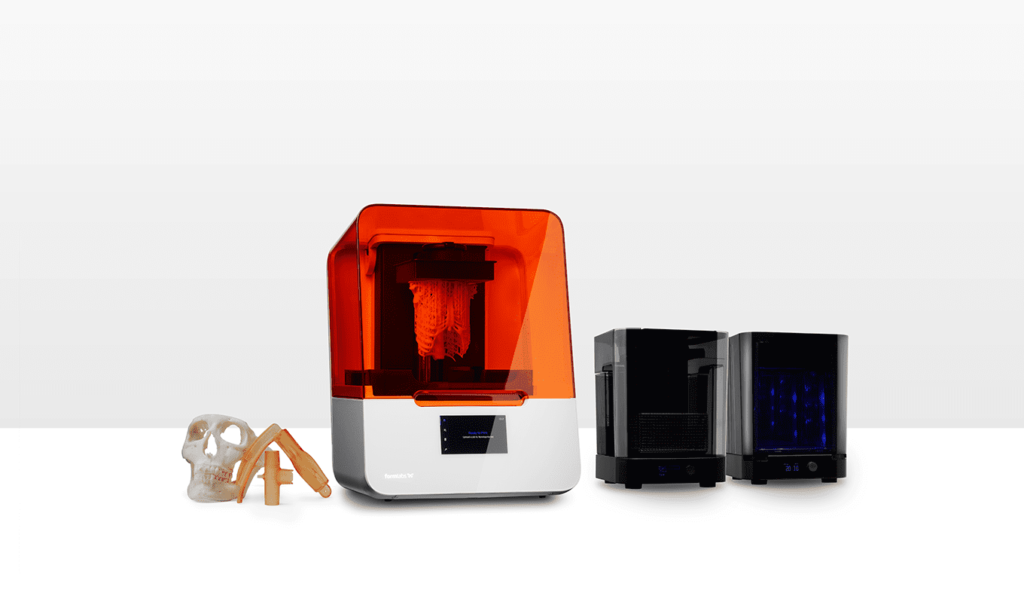
When speaking to beta testers, we found they enjoyed the print clarity, superior mechanical properties, and improved accuracy of the Surgical Guide Resin.
The Surgical Guide Resin is sold at $249.00 per liter and is ideal for:
- Surgical guides
- Drilling templates
- Pilot drill guides
- Device sizing templates
Available for the Form 3 (Early 2019), Form 3B, and the Form 2. It is not available with the Form 3 (non-biocompatible, purchased after Nov 12).

What does this look like in PreForm software?
Formlabs 3D printing software, PreForm, will update with the PreForm 3.1.3 version and will include print setting for the following resins on Form 3B and early 2019 Form 3:
- Surgical Guide Resin, 100 microns
- Grey Resin, 160 microns
The PreForm software will also include the following printer model options:
- Form 2
- Form 3 (early 2019)
- Form 3B
The 'regular' Form 3 (model released after Nov 12, 2019) will come at a later date.

Form 3B
In our latest episode of the ‘3D Printing Show’, Anthony Bayerl, Director of Marketing, and Lauren Adey, Additive Manufacturing Specialist bring you the latest news in the 3D printing industry. We have some really interesting news this week including 3D printed sushi, 3D printed homes in El Salvador and on Mars, and a new Draft Resin from Formlabs.
Watch our video to learn about the latest additive manufacturing news.
3D Printed Sushi created from.. urine samples?
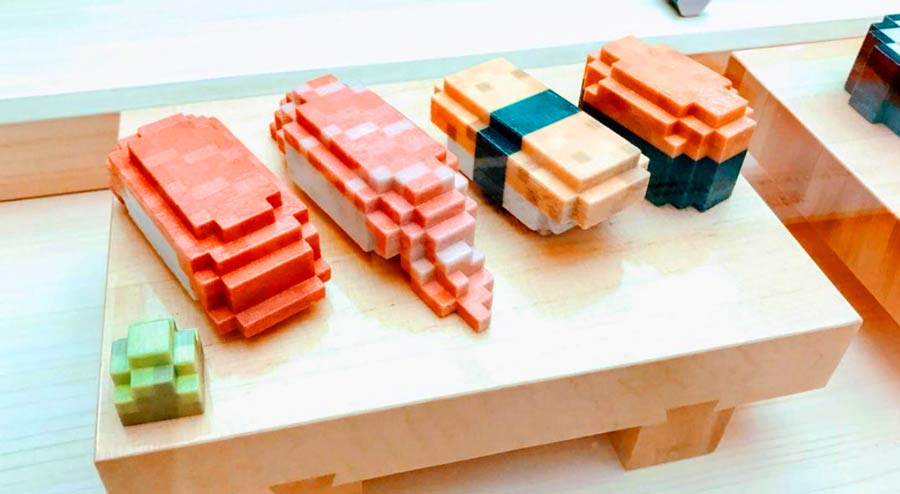
3D printed ‘8-bit’ sushi | Image Credit: Open Meals
A company called Open Meals in Japan is doing the unthinkable – 3D printing sushi for its customers. But it’s not just any type of sushi… it’s custom 3D printed sushi… created just for you. Open Meals plan to open their restaurant called Sushi Singularity in Tokyo in 2020 and are looking for people to invest in their concept of digitalized food.
They brought their idea to a tech event called South by Southwest (SXSW) in Austin, Texas just this last year. Their booth wowed onlookers as they demonstrated that they are taking people’s individual chemistry from hair, saliva, or urine samples to create sushi full of custom-tailored nutrients that their body needs. The food is printed in a cube-shape, giving them the nickname ‘8-bit sushi’.
Open Meals booth shows off 3D printed sushi at SXSW 2018 in Austin, TX.
The concept is unique – their idea is to create a healthy meal for you based on your body’s nutritional needs. They send you a ‘health test kit’, you return it with a sample of your choice of bodily fluids, and they’ll send back nutrient-rich edible sushi. Open Meals has a plan to send their customized sushi anywhere in the world, as long as you have a suitable food 3D printer.
3D Printed Concrete Houses for Homeless around the World
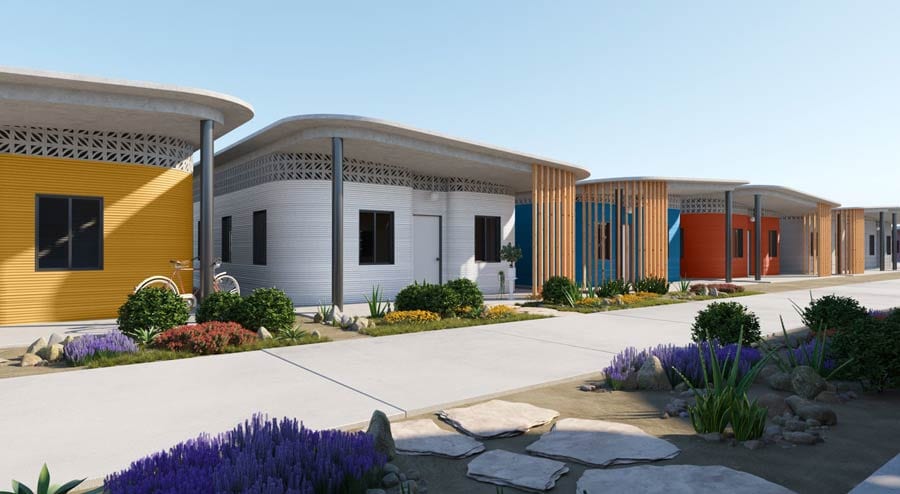
3D Printed Housing Community in Latin America | Image Credit: www.dwell.com
By the end of 2019, the partnership plans to house over 400 individuals with around 100 homes in a 3D printed housing community in Latin America. While the average ‘tiny home’ price tag is over $25,000, these 600-800 sq. feet concrete houses can be built for around $4000 in less than 24 hours. The homes themselves are built from locally-sourced concrete to be durable and to sustain weather conditions such as hurricanes or tsunamis.
ICON’s portable 3D printer, called the Vulcan II, is built to withstand real-world conditions and restraints in third-world countries such as power shortages, access to water, and limited labor. With only a few workers needed due to the 3D printer’s remote monitoring technology, the homes are built with almost zero waste and are sustainable for several centuries.
New Story and ICON lead the way for future 3D printed homebuilding.
AI SpaceFactory works with NASA to build homes on Mars
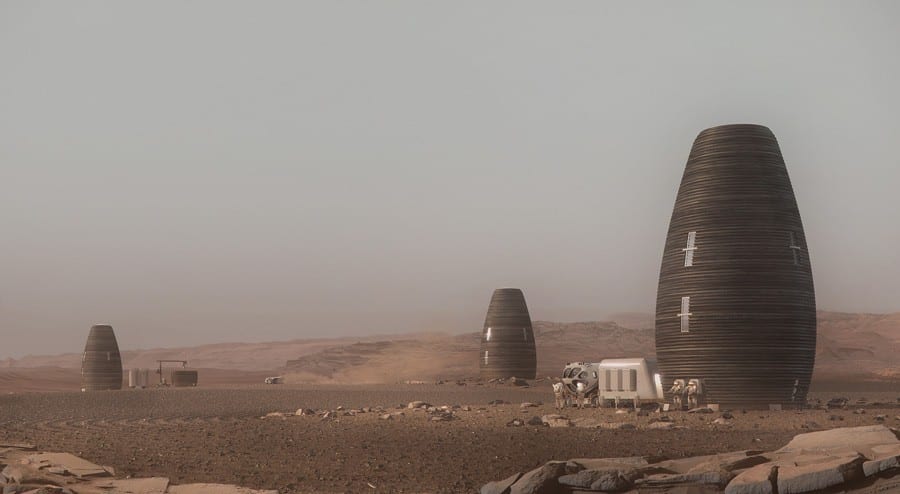
3D printing a community on Mars | Image Credit: AI SpaceFactory
AI SpaceFactory is a company comprised of architectural designers and engineers with a desire to build sustainable and eco-friendly habitats on Earth and Mars. Through 3D printing technology, SpaceFactory has developed a 3D printed vertical home or habitat, called MARSHA (MARS HAbitat), that serves as a livable space for humans on Mars.
The structures are built with a double shell system for isolation from extreme temperature swings and harsh conditions on the planet. The first floor consists of a Mars Exploration Rover docking port, a wet lab, and space hatches for entry/exit; the second floor consists of a dry lab and kitchen; the third floor consists of a bathroom, a garden, a sleeping quarters, and an office space; and the fourth floor consists of a ‘sky room’ for exercise and recreational purposes.
MARSHA considers an optimum mental health environment for humans by including windows on every floor with natural sunlight and artificial lighting that mimics Earth-like light.
According to SpaceFactory, MARSHA habitats are made from a mixture of basalt fiber from Mars rock and renewable bioplastic (polylactic acid, or PLA) processed from plants grown on Mars – which is their plan for agricultural sustainability.
Introducing AI SpaceFactory’s MARSHA habitat for living on Mars.
New 3D Printing Draft Resin From Formlabs
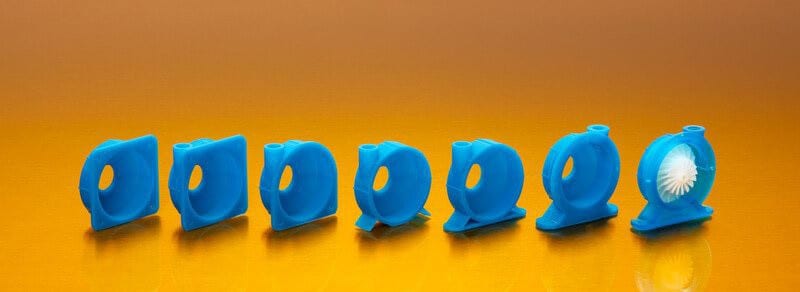
Draft Resin, from Formlabs, for multiple design iterations.
The new Draft Resin is three to four times faster than other Standard Resins giving you the ability to cycle through multiple design iterations at a time. Request a free sample of the Draft Resin to see how the material holds up to your standards.
Lauren Adey, our Additive Manufacturing Specialist, can help you choose the right 3D printer or resin for your needs. Make sure to follow her on LinkedIn to see more additive manufacturing news!